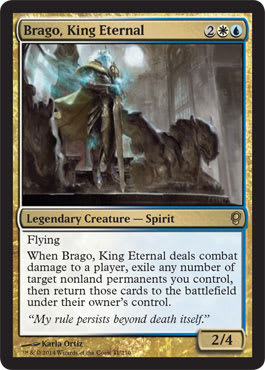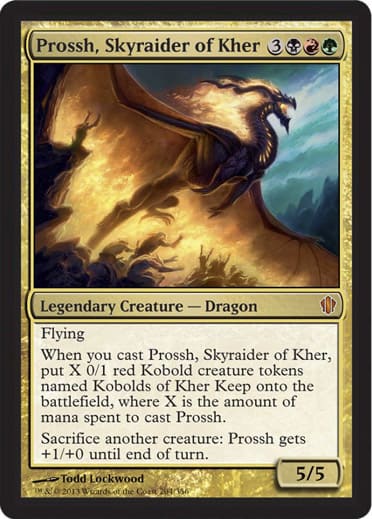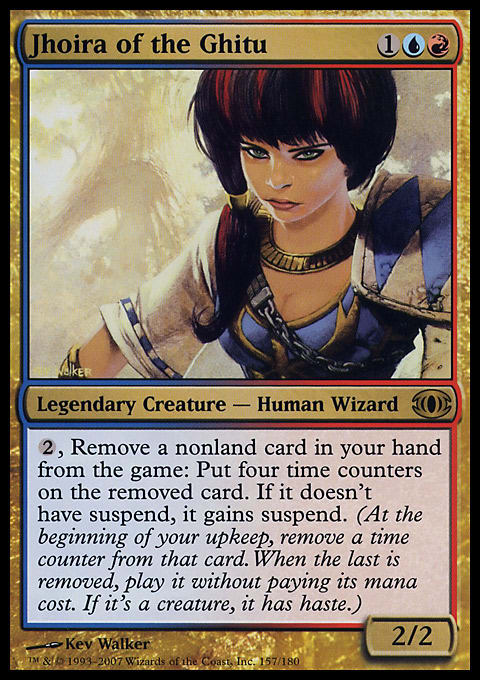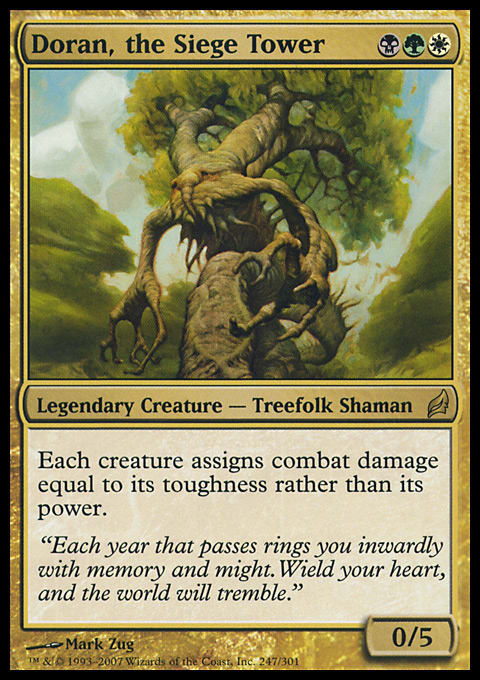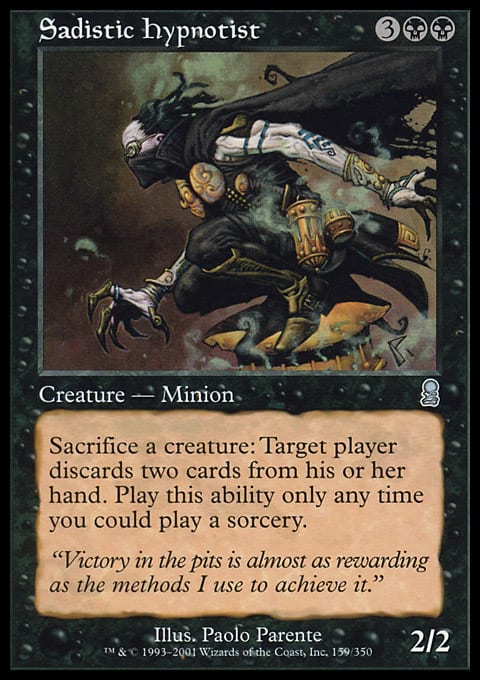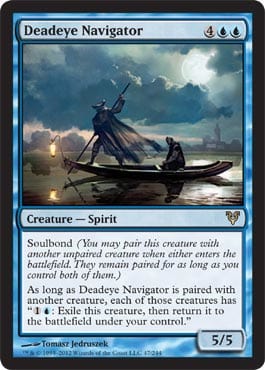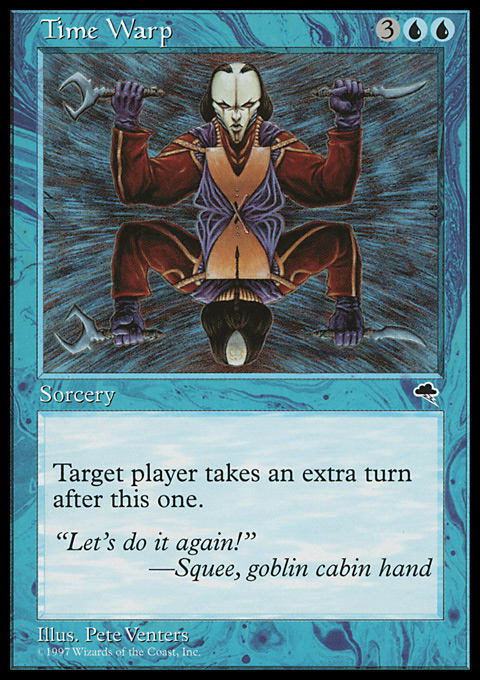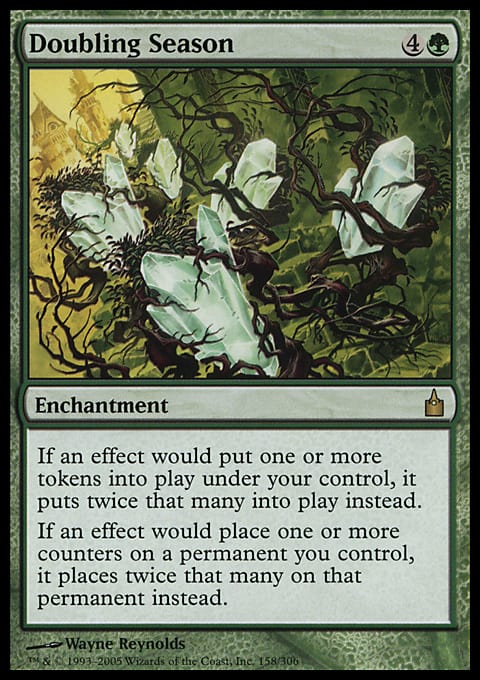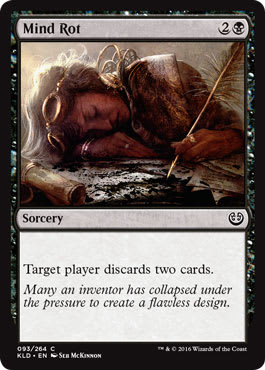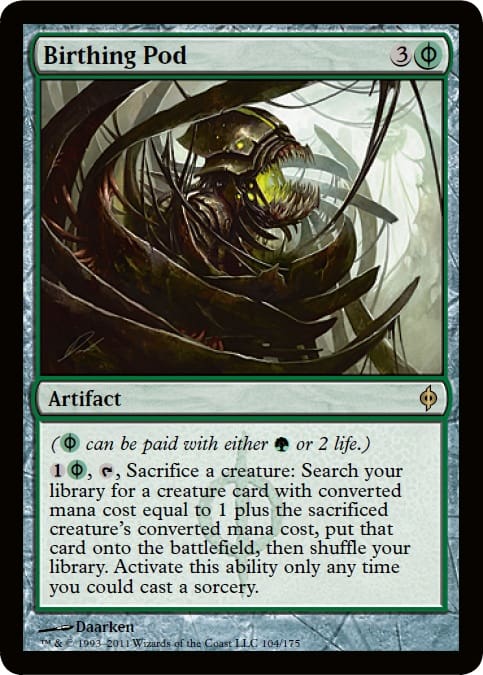Group politics are an integral aspect of multiplayer Commander. While no two groups have the same political atmosphere, most groups experience the same issues over an extended period of time.
My story in particular is about my own ragtag band of Planeswalkers and our quest to find parity in our weekend warfare.
See, my group is relatively new to the world of Commander. We’ve learned the format together and built our decks together over time, helping each other to find cards and perfect our respective strategies. Aside from the Internet, we’ve had very little outside influence in terms of other players, and none of us has played more than a game or two at a local game store.
As such, our collective sense for how powerful our decks should be has grown naturally over the past year. Thus, I present our journey from degenerate to . . . well, we’re still trying to figure that out.
Meet the Fellowship
When we first dreamed up our Commander decks, I think we were all in agreement that we wanted them to be flavorful and unique. We didn’t have much of a concept of how powerful Commander decks should or could be, so we stuck to what we knew: having fun.
To that end, our small group focused on tribal, thematic, and synergistic elements. Richard chose to build a deck around Brago, King Eternal that would bash with Angels whilst using blinking mechanics to gain card and board advantage. It also had a significant Time Walk theme.
Antoinette chose to build around Kaalia of the Vast, as Dragons were her absolute favorite cards to cast in Magic. That didn’t last long, however, as she hated playing with white cards, and she eventually settled on Prossh, Skyraider of Kher. Congruent with her personality, the deck’s purpose and theme was simple: Cast Dragons and attack with Dragons.
Rene, my lovable roommate, came into the picture a bit later. He immediately settled on artifacts as his theme after buying the red Commander (2015 Edition) deck with Daretti, Scrap Savant. As blue was his other favorite color, we decided that he should try a U/R artifacts deck. Opting for flavor, he chose Jhoira of the Ghitu as his commander. With an artifact theme rather than a suspend-Omniscience-Ulamog-and-Worldfire theme, as Jhoira decks are wont to have, it seemed to be a reasonable choice. He eventually switched to Nin, the Pain Artist, but there’ll be more on that later.
As for me, Doran, the Siege Tower was always destined to be my first choice of commander. I didn’t, however, go for a strict tribal theme, nor did I go for a big-butts-matter-Sir-Mix-A-Lot theme. Instead, I focused on exploiting Doran’s ability in incremental ways while ramping into huge creatures. In a way, it was a Big Hate Bears deck, full of ways to disrupt my opponents without strictly requiring Doran to be on the field. I eventually realized, however, that what I really wanted to do was reanimate creatures, and I switched to Karador, Ghost Chieftain.
Now, I’m sure you can see where this is going. I opted out of using my favorite card of all time in favor of a commander with more raw power and combo potential. In fact, our commander choices played a large role in the directions our decks eventually took.
If It Ain’t Broken, Break It
It was my fault. In our group, I’ve always been the one most interested in competitive Magic. Modern is my favorite format (I play Ad Nauseam, which is about as far from fair as you can get), and I never miss watching a Legacy or Vintage tournament. So, while my experience and knowledge of Commander was limited—and mostly theoretical—I was comfortable in my knowledge and experience in faster, more ruthless formats. It was only a matter of time before I tried to break my Karador deck.
I want to say, though, that I didn’t go all the way. I didn’t throw Hermit Druid and Survival of the Fittest into the deck. Things could’ve been worse. I may be a bad person, but I’m not Joker-tier bad.
When I chose Karador, I didn’t really understand the can of worms I was opening. The first time I Googled “best cards for Karador deck,” it was like Frodo finding the One Ring. Within fifteen minutes, I had added several infinite combos and soft locks to the list, and it felt good. I hadn’t even ordered the cards, and I already felt that I was oozing with power. With Sadistic Hypnotist and Yosei, the Morning Star, I could essentially lock a player out of the game until another player stopped me. With Reveillark, Saffi Eriksdotter, Karmic Guide, and Altar of Dementia, I could piece together any number of horrific infinite loops. But I knew it wouldn’t fly in my group—these cards were just too mean.
So, I took the rational course of action: I asked my friends if I could suggest some cards for their respective decks. I mean, if you can’t convince someone to join you, promise them more power and ask again, right?
Now, this wasn’t necessarily done consciously. And, truthfully, not all of these ideas were mine. The group as a whole caught on, and we created these monstrosities together. I just encouraged it at every turn.
Richard’s deck began innocently enough, but we soon discovered that the deck could destroy lands, create soft locks that were difficult to interact with, and take infinite turns with ease. Venser, Shaper Savant and Deadeye Navigator could bounce away a player’s field with a small investment of mana. Brago and Exclusion Ritual or Reality Acid could slowly wipe a player’s board in the early game. Archaeomancer with just about any blinking effect could give Richard infinite turns with Time Warp. The best part is that most of these synergies could be done with Brago alone, thus giving Richard a way to severely disrupt a player’s board consistently. Factor in cards like Venser, the Sojourner, Crystal Shard, and Deadeye Navigator, and the deck became slightly frightening.
Brago, King of Time ? Commander | Richard Robb
- Commander (1)
- 1 Brago, King Eternal
- Creatures (25)
- 1 Admonition Angel
- 1 Akroma, Angel of Wrath
- 1 Angel of Serenity
- 1 Angelic Skirmisher
- 1 Archaeomancer
- 1 Archangel of Thune
- 1 Avacyn, Angel of Hope
- 1 Baneslayer Angel
- 1 Deadeye Navigator
- 1 Ephara, God of the Polis
- 1 Fiend Hunter
- 1 Karmic Guide
- 1 Lighthouse Chronologist
- 1 Linvala, Keeper of Silence
- 1 Medomai the Ageless
- 1 Mistmeadow Witch
- 1 Resolute Archangel
- 1 Restoration Angel
- 1 Reya Dawnbringer
- 1 Serra Ascendant
- 1 Snapcaster Mage
- 1 Sunblast Angel
- 1 Teferi, Mage of Zhalfir
- 1 Thassa, God of the Sea
- 1 Venser, Shaper Savant
- Spells (29)
- 1 Banishing Light
- 1 Cast Through Time
- 1 Detention Sphere
- 1 Journey to Nowhere
- 1 Luminarch Ascension
- 1 Oblivion Ring
- 1 Gideon Jura
- 1 Jace Beleren
- 1 Tamiyo, the Moon Sage
- 1 Venser, the Sojourner
- 1 Condemn
- 1 Cyclonic Rift
- 1 Delay
- 1 Dig Through Time
- 1 Last Word
- 1 Mystical Tutor
- 1 Path to Exile
- 1 Rewind
- 1 Swift Silence
- 1 Swords to Plowshares
- 1 Time Stop
- 1 Beacon of Tomorrows
- 1 Day of Judgment
- 1 Defy Death
- 1 Resurrection
- 1 Savor the Moment
- 1 Supreme Verdict
- 1 Temporal Mastery
- 1 Time Warp
- Artifacts (7)
- 1 Conjurer's Closet
- 1 Door of Destinies
- 1 Gilded Lotus
- 1 Lotus Bloom
- 1 Mind's Eye
- 1 Sol Ring
- 1 Whispersilk Cloak
- Lands (38)
- 1 Cavern of Souls
- 1 Celestial Colonnade
- 1 Command Tower
- 1 Emeria, The Sky Ruin
- 1 Evolving Wilds
- 1 Flooded Strand
- 1 Glacial Fortress
- 1 Hallowed Fountain
- 1 Homeward Path
- 7 Island
- 1 Kor Haven
- 1 Mikokoro, Center of the Sea
- 1 Minamo, School at Water's Edge
- 1 Mystic Gate
- 1 Nimbus Maze
- 1 Oboro, Palace in the Clouds
- 13 Plains
- 1 Reflecting Pool
- 1 Reliquary Tower
- 1 Seraph Sanctuary
- Sideboard (0)
Rene eventually discovered for himself that he didn’t want to play fair games of Magic. No, he wanted to win. I had no idea that he had been planning our downfall until he showed me his final decklist. It was a major departure from his Jhoira deck. Not only had he switched to Nin, the Pain Artist, but he had also jam-packed his deck full of infinite-mana and -damage combos. With just Basalt Monolith and Rings of Brighthearth, he can generate infinite mana to use with Nin or Goblin Cannon. See, if Nin deals infinite damage to an opponent’s creature, that opponent draws his or her entire deck. And with cards like Fabricate, Reshape, and Tezzeret the Seeker, Rene can piece these combos together in just a few short turns. His deck also features the classic Mindslaver lock. With Academy Ruins on the field, Mindslaver becomes a recurring you-lose-all-of-your-turns engine, which is especially potent in a format in which using your opponent’s Avenger of Zendikar (and his not-so-little Plant buddies), Ulamog, the Infinite Gyre, and Vorinclex, Voice of Hunger to attack another opponent is considered fair game.
Oh, and Antoinette? Well, Prossh is a one-hit-and-you’re-dead kinda deal. With Parallel Lives, Doubling Season, and Death's Presence, Prossh is about as much fun as being stabbed in the face with a soldering iron (that’s a Joe Dirt reference; thanks, Christopher Walken). I mean, commanders like Prossh do one thing: They knock opponents out with commander damage. That’s not too broken, right? But that’s sort of like looking at a baseball bat and thinking to yourself, “at least it’s not a truck!” right before you are hit with it. The worst part is that she can kill as early as turn four if she puts Anger in the graveyard or Ogre Battledriver on the field. When your win condition is your commander, consistent kills are almost guaranteed.
I want to emphasize that these things by themselves are not inherently or necessarily broken, mean, or beyond reason. Whether a deck is fun to play against depends entirely on the players, and the end goal is to determine what, exactly, is an appropriate power level for creating the most fun and interactive game states for our group specifically. As it turns out, our decks were pretty fun, but only for the person winning. We needed a change. Well, some of us needed a change.
If It Ain’t Nice, Don’t Play It
You know what they don’t teach you in school? They don’t teach you that when you have Tooth and Nail in hand and 9 mana to use it, you can almost always end the game then and there. But that’s probably because Magic isn’t considered relevant in language and math classes. I don’t know why.
Anyway, whenever I played my Karador deck, I would inevitably tutor for Tooth and Nail and use it to put Sadistic Hypnotist and Yosei into play, effectively locking one or more players out of the game. These were not clean, fun, wholesome games of Magic that I was winning. So, I took Yosei out of the deck. The Hypnotist can stay—I mean, it’s just a sorcery-speed Mind Rot for 5 mana most of the time, though any sacrifice outlet can enable other shenanigans in a Karador deck.
But removing Yosei from my deck turned out to be a show of good will, and Richard soon took Exclusion Ritual out of his list. Rene, too, removed several combos from his deck. Antoinette has yet to change hers, but, I mean, there’s nothing stopping us from packing more removal, right? Right . . .
Our group is headed in the direction of removing the meanest easy-to-assemble combos and locks from our decks while keeping in the late-game finishers. For example, I have not removed any part of the combo of Reveillark, Saffi Eriksdotter, and Karmic Guide from my deck. I am considering it, however—it’s still ridiculously easy to find and tutor up with Birthing Pod, Demonic Collusion, or the like. Without the right sacrifice outlet, however, it doesn’t do anything (or maybe it does nothing).
Ultimately, our goal is to have fun. Sometimes, we want to have fun at the expense of others, and that’s okay. But when it comes to Commander, if you find that you’re not having fun losing or being locked out of the game before you’ve had a chance to do much more than play a few lands and say “go,” consider discussing the issue with your group. Ultimately, the power levels of our decks haven’t gone down all that much, but we’re coming closer to finding that sweet spot where the warfare goes on long enough for everyone to get a few good hits in (as long as Prossh isn’t the one getting the hits in, of course).
But what about you, friend? What are the politics like in your group? What’s the acceptable power level of decks that you and your friends (and mortal enemies) find fun? Have any stories about your group coming to peaceful (or violent) resolutions? Let’s hear ’em.
Your most trusted ally (until you attack me, damn you),
Jimi Brady
















